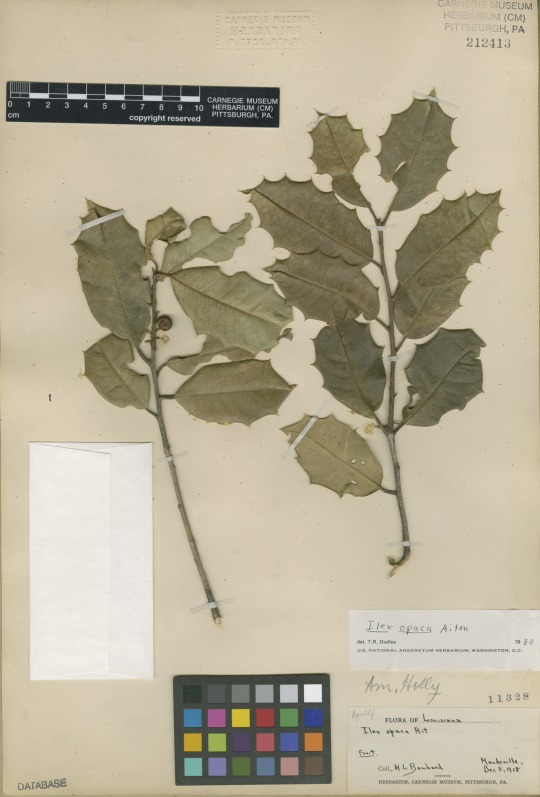
Are you decking your halls with boughs of holly? This specimen of American holly (Ilex opaca) was collected by M.L. Bomhard in Mandeville, Louisiana by on December 8, 1928. The holly revered for its holiday cheer usually refers to a related European species, Ilex aquifolium. But there are native holly species in North America that are equally (if not more) cheerful. Like most other hollies, American holly is dioecious, meaning it has male and female flowers on separate plants. Only the female plants have the characteristic bright red berries we all know and love. American holly stands out as one of the few broadleaved evergreen trees native to the Eastern United States (i.e., has green leaves during winter that are not needles). This species is near the northern edge of its range in Pennsylvania and is more common in southern states. It is listed in PA as a species of “special concern” due to its relative rarity.
Botanists at Carnegie Museum of Natural History share pieces of the herbarium’s historical hidden collection on the dates they were discovered or collected. Check back for more!
